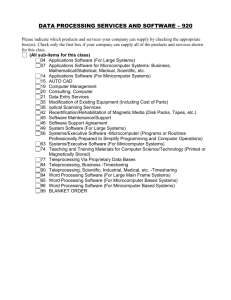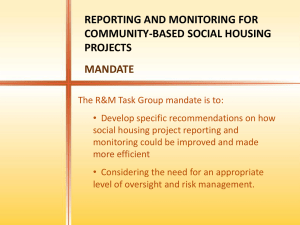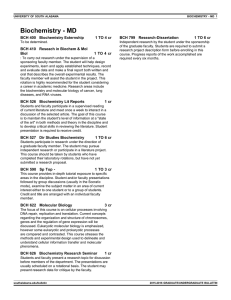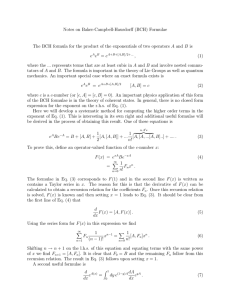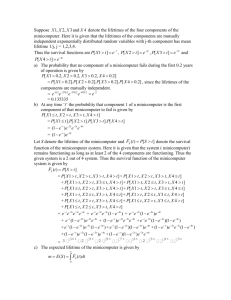th Congress of the International ... 14 of Photograumetry, Hamburg 1960 Comrr.ission IV
advertisement
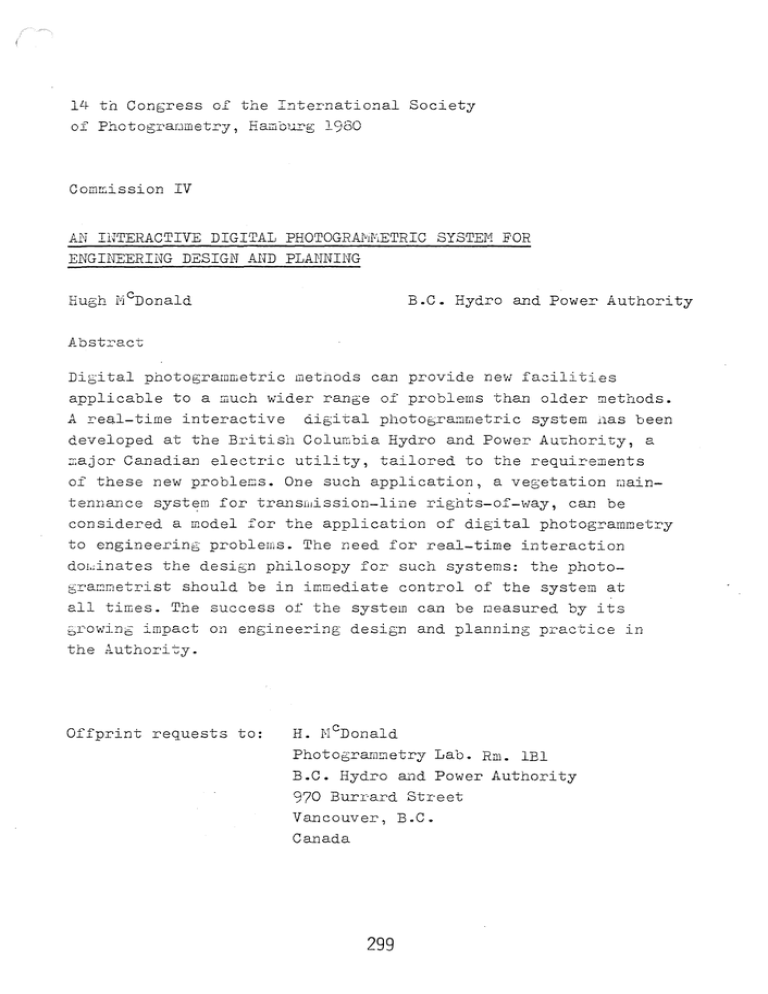
14 th Congress of the International Society
of Photograumetry, Hamburg 1960
Comrr.ission IV
AN INTERACTIVE DIGITAL PHOTOGRAivJf·'!ETRIC SYSTEI"l FOR
ENGINEERING DESIGN AND PLANNING
B.C. Hydro and Power Authority
Digital photogramn~etric l!Jet.hods can provide nevi fa~ili ties
applicable to a much wider range of problems than older methods.
A real-time interactive ciigi tal photogra:.:111etric system 11as been
developed at the British Columbia Hydro and Power Au~hority, a
:::;aj or Canadian electric utility, tailored to the requi:r·ement s
of these new problems. One such application, a vegetation r.Jaintennance syst~m for trru1sn1ission-li11e rights-of-\-vay, can be
considered a model for the application of digital photogrammetry
to engineering problems. The need for real-time interaction
dowinates the design philosopy for such systems: the photogra~metrist should be in immediate control of the system at
all times. The success of the system can be rJeasured by its
srow1ng 1mpact on engineering design and planning practice in
the Authori":;y.
Offprint requests to:
H. I,1cDonald
Photogrammetry Lab. Rm. lBl
B.C. Hydro &1d Power Authority
970 Burrard Street
Vancouver, B.C.
Canada
299
Introduction
The British Columbia Hydro and Power Authority is a major Canadian
electric utility with several thousand l;:ilorueters of transmission
lines of various types. In the past our mapping needs were wet
entirely by private companies working under contract. Five years
ago we began production on an interactive digital photogrammetric
system which is continually being enhanced. While the system is
in fact quite general, and so can produce all the usual photograwwetric products, it is specifically designed for specialized
engineering applications where the final product is not a map of
any sort but rather a series of reports representing the applica~
tion of general engineering criteria to a specific topographic
situation. While the particular engineering problem considered
in this paper is of only limited interest, the techniques used
should be applicable to a wide range of proble;:;;s.
Hardware
·I'he original system at BCH consisted of a Digital Equipment Corp.
PD.P-11/4-0 minicomputer, with 64- Kilobytes of memory, 8 Hegabytes
of disk storage, a magnetic tape unit and a line printer; a Zeiss
Planicart stereoplotter with encoders for the three principal
,;,otions ~ a Cybernex D 1600 digitizer/terminal comprising a
character display screen, a keyboard, and counters for the encoders; and a Kern AT-2 automatic table. This system prove& quite
adequate for initial production and developement, but recently
increased production requirements have forced us to expand the
system considerably. The hardware currently in use at BCH (Fig.l)
consist of two work stations which share both a minicomputer
and an automatic table. Each work station consists of an analogue stereoplotter (Zeiss Planicart or Wild Aviomap) and a
~icrocomputer. Each stereoplotter has encoders for the three
principal wotions and a set of four light visible in the oculars.
300
Each microcomputer consists of a Z-80 processor with 32 Kilobytes of memory, and has counters for the encoders, a means of
controlling the lights, a footswitch, a keyboard, a character
display screen, a 9600 Baud port for communication with the
Dinicomputer, and a second such port for the automatic table.
The PDP-11/40 minicomputer has been expanded to 256 Kilobytes
of semiconductor merr.ory and 140 f'Iegabytes of disk storage, and
retains the magnetic tape unit and line printer. In addition
there is a Talos digitizing table with its own attached microprocessor, which has 52 Kilobytes of memory, a character display
screen, a keyboard, and parallel ports for the table. This
processor is currently used mostly off-line, but it can be
connected to tile minicomputer for data transfer.
tal Elevation Models
l\Iuch of our work at BCH requi:!:·es the construction of DEI'-I' s from
small-scale photography in areas of moderate to high relief
and moderate to heavy coniferous forest cover. For this we use
a progra11 which continuously interpolates the presumed ground
elevation from the DEN and indicates by weans of the lights
whether the floating mark is above, below, or on the ~odeled
surface. The photogrammetrist can enter points into the DEM
by depressing the footswitch wherever the interpolated surface differs from the true ground. Since the points entered
correspond to real topographic features, and only as many
points are entered as are needed for accurate interpolation,
this method produces far fewer points than automatic scanning
for a given accuracy. In one project we described 1?0 square
kilowetres of mostly high-relief terrain to an accuracy of
one metre with less than 900 000 points. High quality contour
maps were produced from these points without any need for
extensive data reduction or editing operations.
301
Tree Monitor System
Our most important application is the Tree Monitor System (TMS)
which was originally developed over ten years ago at the Bonneville Power Authority in Portland, Oregon by Hr. 1-ially Wilson
and Mr. Jim Robinson. It was after a study of this system that
the decision wa~ made to develope a digital photogrammetric
system at BCH specifically to support this application.
One of the .r:1ajor expenses in transmission line
construction and maintennance in 1r1ilderness areas is vegi tation
clearing. The usual proceedure is to clear-cut a swath 50
metres or more wide the length of the rignt-of-way. This removes many trees w:nich pose no danger to the line vii:lile it
leaves some behind that are potentially dangerous. The purpose
of TMS is to identify those trees which are in fact dangerous
and to prepare a clearing-report which gives minimal clearing
requirements and a guaranteed margin of safety.
A tree may endanger a trapsraission line in several
\vays: it may simply stand too close to the conductor, and so
violate a permanent clearance: limit, it may fall towards the
conductor,or the wind may blow the conductor towards the tree,
violating s:r.1aller temporary clearance limits (Fig.2). In order
to determine if a given tree is dangerous, it is necessary to
locate the tree relative to the conductor and to determine its
height and ·expected growth during a clearing cycle, typically
five years. Information on line geometry is ootained by digitizing engineering drawings, tree growth is predicted on the
basis of height from data supplied by the government forestry
service, all otJ.1er data are obtained photogramn:etrically frora
1:12 000 scale colourphotography typically flown in a single
strip along the transmission line.
In the operation a model is first relatively
oriented, then a program is run to determine the model to
UTlvi co-ordinate transform based on photogramrnetrically
obtained control; the model need not be scaled or leveled.
30?.
The Tf•lS program itself is then invo~,::ed and an appropriate operating mode chosen. The photograrE<iletrist usually begins by
entering engeneering data at the keyboard, or editing data
already present, then he builds a soall ground model along
the right-of-way, exactly as in the DEB program. When the
operator enters the danger tree mode, the program presumes
that the floating mark is at the top of a tree. Every 100
milliseconds the program reads the model co-ordinates,
transfor:ns them to the UTI'-1 system, interpolates in the DEM
to determine the sround elevation, subtracts this fro~;; the
elevation of the mark to determine the tree height, calculates expected growth as a function of height, tests the
gro;,m tree to see if it could endanger the line, and sets
the lights to reflect the result of this test. When the
photogrammetrist sees a red light, indicating a dangerous
tree, he may mark the tree by depressing the i"oots\vi tch
which will result in information on the tree appearing in
a clearing report used by the field cre\>lS. At any time
further ground points or engineering data can be entered at
the photogrammetrists discretion.
This system has had a dramatic impact on clearin~
practices at BCH; in regions where it is in full use clearing
I
cost nave been reduced by 50%- The impact on design practice
has not been as grea~ to date, although the potential benefits are ev~n greater. It is now quite practical to determine
clearing costs for both original construction and later
maintennance for a nwnber of preliminary designs, and so
to include clearing costs as a factor in selecting the final
design. r'linimal selective clearing has the additional advantage of being much more esthetic, a major consideration
when transmission lines must be built through parks, resort
areas, or other regions of high visibility.
303
System Design
During the initial design of the computer system three major
requirements were identified. Firstly since there was no
other photogramrJetric installation at BCH this would have to
be a general-purpose photogrammetric system; a turn-key
machine devoted to this single application would need continual support from an outside photograrnmetric service.
secondly the system must allow for concurrent production
and development. An early start to production was a major
requirement within the company, but the only way this could
be achieved was by writing the simplest minimal software.
Continual development could then provide enhanced facilities
as the requirements of production dictated. Thirdly the system
~mst provide essentially instant response, that is, the photogrammetrist wust never be aware of a delay between a motion
of the handwheels and a response in the lights.
The matter of real-time response deserves further
comment. It nas been our experience that when the response
time is 100 milliseconds or less the photograrnmetrist can
easily develop a feel for the system, which leads to a
drarnatic improvement in production. With such response rates
an operator can enter thirty points per minute into a DEI'1, whereas
if the response period increases to 125 milliseconds only
fifteen points per minute can be entered, and the system is
noticeably "soft" • There appea1:-s to be
little subjective
or objective benefit to response times less than 100 milliseconds.
Current Developments
The major upcoming change to the hardware is the provision
of a conmon high-speed communications link to connect the
three microcomputers and the minicomputer. This will allow
the digitizing table to be integrated into the system as a
third wor~ station, as well as reducing the overhead required
304
for communicating with the work stations.
In order to relieve the computing load on the minicomputer, more of the work will in future be done directly at
the work stations. Currently the only real computing done by
the work stations is the calculation and display of UTM coordinates, based on a transform calculated by the minicomputer.
The system is expected to evolve into a general
distributed-processing system in order to meet the expected
growth in demand.
We are currently studying two major applications,
each of which will require the production of a contour map to
be used at the digitizing table. The first is an interactive
road design program, which _will allow an engineer at the table
to trace out a route on a map, and will continually calculate
cut and fill volumes, enforce constraints on slope and curvature, and indicate the practicality of the chosen route on a
set of lights. The second application, which will be used ·in
much the same way, will produce preliminary transmission line
designs as an aid to route selection. Each of these programs
is based on a· batch program currently in use at BCH, but each
will facilitate the examination of many alternate routes, which
has not been practical in the past.
Conclusions
It is evident from the success of the current system at BCH
that digital photogrammetric methods can be applied to
engineering problems only remotely connected to map-making.
Nany such problems have been ignored in the past for want
of any method of solution. Such novel proceedures as these,
because they introduce new considerations and new points of
view, will require extensive user education and a leng~hy
period of adjustment before they are completely accepted. In
tne opinion of the author, much work remains to oe done in
the field of such "exotic" applications before they can be
accepted as a normal part of photogrammetry,and so gain full
acceptance in the engineering community.
305
Auiom<l.tic
,--------------
Ta.b/e
Ker-n AT--a.
1
-------------"\t
r
I
I
•
I
c
I
l
I
'
f
I
Stertoplotter
encoders
leiss Pla.nicart lights
t1 icroc.ompu.fer2- go
Hicroc.ompc;afe,. :-.
3'-.
3~ K.:lobytt!S
2-80
l<t·{obyte.s
En.tode;-s St~reoplottet-
! Ugh.ts
u·JJ n ·
wu.o nvtoma.p
·'
v
\-1 Hihicompr.der-
POP- H/4--0
I...N
C)
m
'''
f);,;tizin1 fa-ble
ralos
2'1-B Kdo bytes
Microc~Jmpu"ter
'l.-$0
5' Kilobytes
Oa...te:t-
Ch.-~nnels
p~r~~~e~t---------
temporo.r, - -- -- __ _
l=i<JtA.re.
I
- l~a.,.J~t~tr-a
.A\
I \~
,,
-~....
I
~
/
~,7
\...N
0
~
'
~'
....
/- -.., \
I
\-.
e
\ ',
'\.
\
/
-....l..,...,
'
\.
\\
'-~~
\~
)
I
/
/
--- ""
-,
\
(
•
Jv'
--- ,\,.,.
,_ \
......
I
I
I
I
\
.~---
•
/
/
\
''
~1
,, '
A
.
--;
-
/A
..../~
FQ.Jiiny C/ea..rahce
...
~
PeY'm<)l.ft t!Ut
S W<1hf C I ea ra.hce
t c I ear-a-n ce
j::/Ju~re :;z_- Tr-ansmis~ton Lt'he Cross Sectc:c,_

